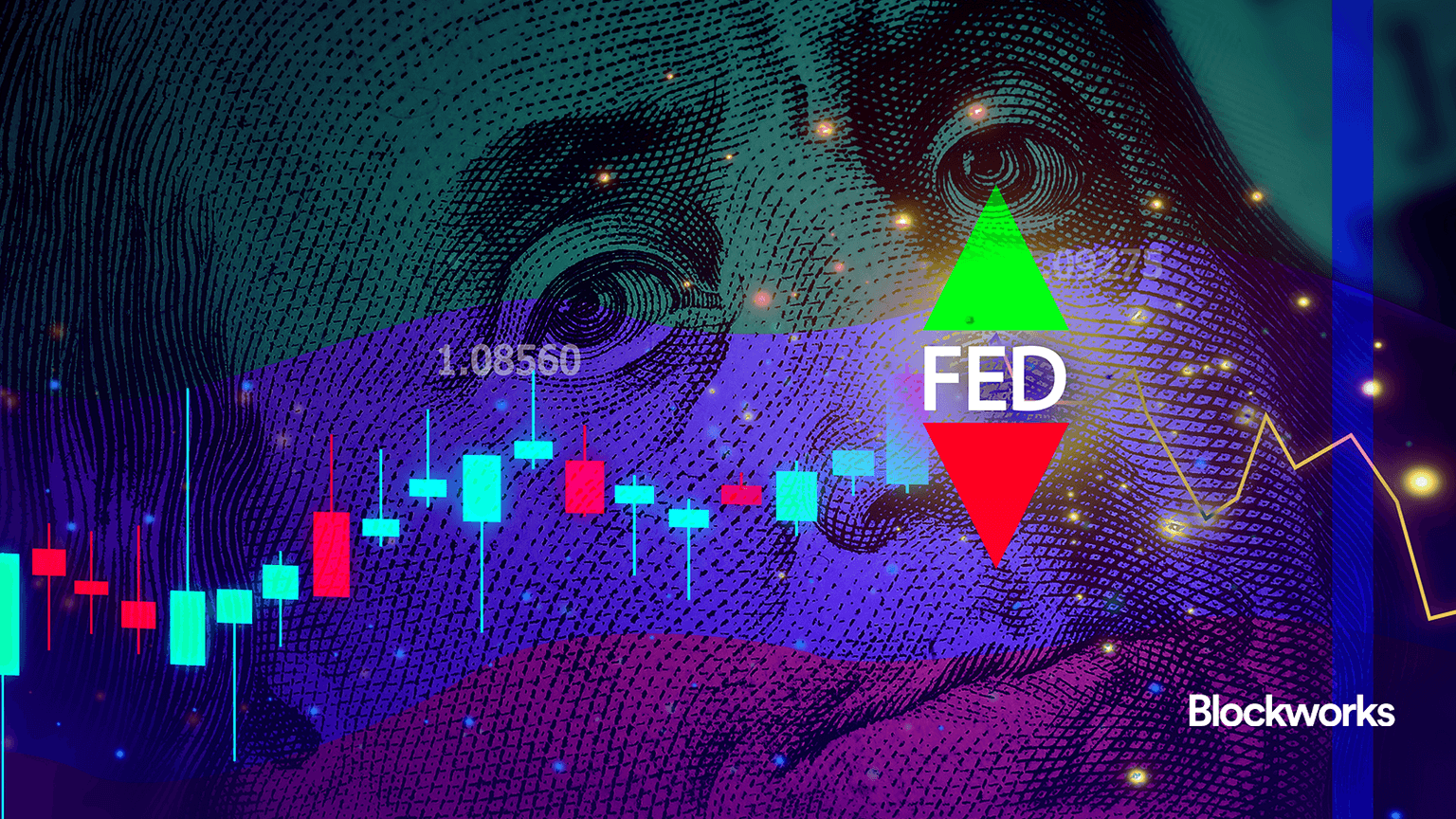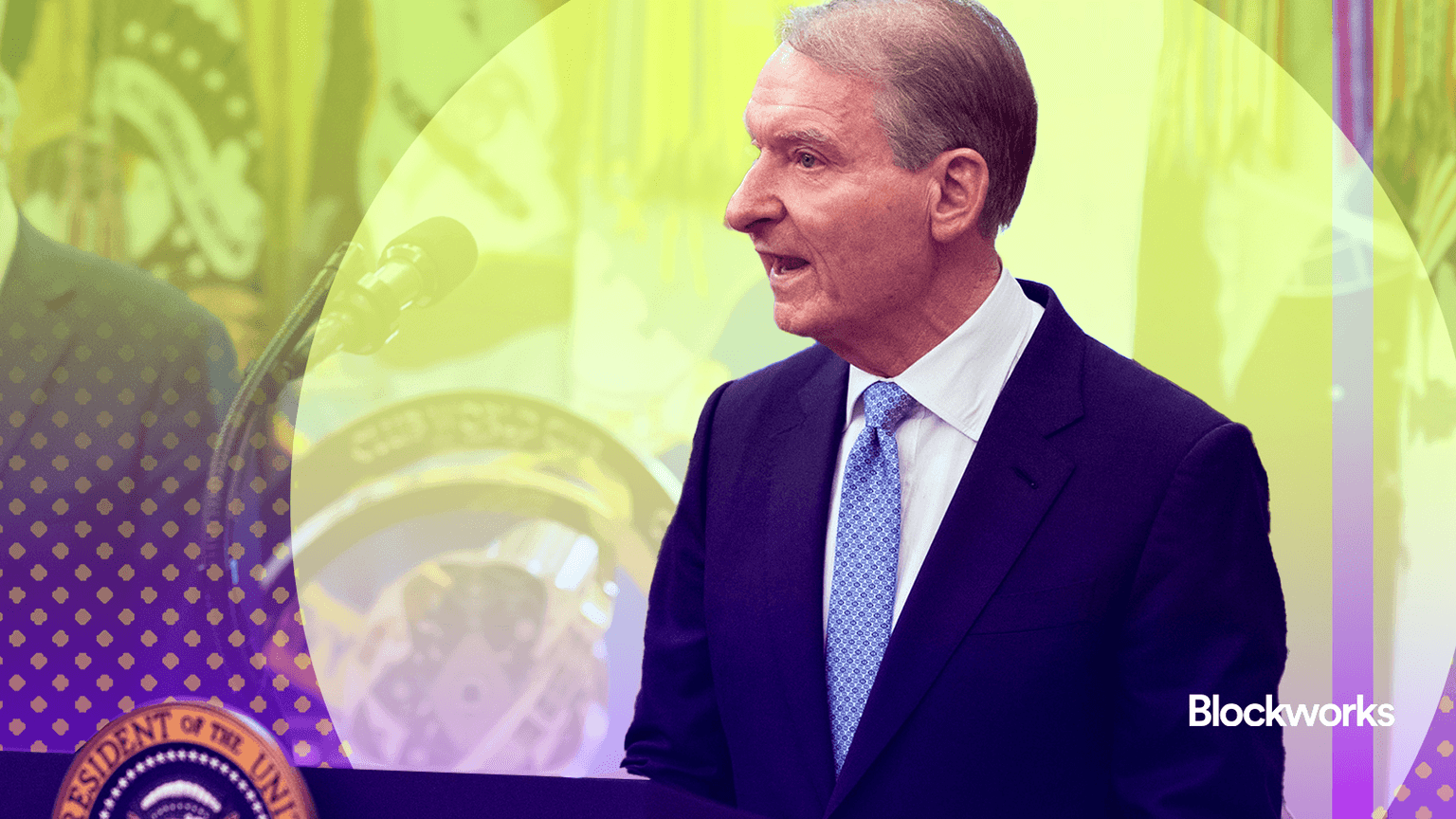21Shares exec talks US crypto ETF adoption, where we go from here
Shifting attitudes in Washington could quicken approval of solana ETFs, says 21Shares US business head Federico Brokate

21Shares and Adobe stock modified by Blockworks
As 21Shares continues its crypto product push in the US, a new executive at the firm said the shifting attitudes in Washington could quicken approval of solana ETFs.
Federico Brokate, head of the crypto ETP issuer’s US business, joined the company in June. Formerly the Americas business strategy director for BlackRock’s iShares, Brokate helped the asset management giant launch the iShares Bitcoin Trust (IBIT) in January.
21Shares debuted its own spot bitcoin ETF with Ark Invest at that time. It was then one of eight issuers to bring a spot ETH fund to the US market last month.
Brokate told Blockworks in an interview that a spot solana ETF would “sit really nicely” in a portfolio beside those BTC and ETH products.
After VanEck filed for a SOL-focused product in late June, 21Shares quickly followed suit. In Europe, 21Shares offers a Solana Staking ETP with roughly $1 billion in assets.
When the Securities and Exchange Commission could approve a solana ETF remains uncertain for now.
Some have said the regulator might want to see a regulated SOL futures market — and a correlation between that and the spot market — before approving such a product.
Read more: Why more US spot crypto ETF approvals may be unlikely in the near term
“If that’s the path the SEC wants to chart, we’re happy to go down that road,” Brokate said. “But ultimately I think the attitude in Washington towards the category as a whole has really shifted in a favorable way. So we think there could be some sort of acceleration to the approval of a spot solana product.”
Ultimately, the executive added, he sees a future of US ETFs that holds more than one crypto asset.
“When that happens is up for debate, but I think that’s the trajectory we’re on at this point,” Brokate said.
US spot bitcoin ETFs have collectively tallied $17.5 billion of net inflows since hitting the market in January, according to Farside Investors data.
Their ETH counterparts, which launched on July 23, have not been able to fully offset $2.1 billion of outflows from the Grayscale Ethereum Trust (ETHE), bleeding $511 million in their first nine trading days.
Retail investors have driven adoption of crypto ETFs so far, Brokate noted. On the institutional side, hedge funds and pension funds have allocated capital to the BTC products.
As adoption continues, Brokate said he has his eye on the wealth manager segment.
“Advisers in the US tend to be the biggest buyers of ETFs, and we think the same thing will play out for digital assets,” he noted. “It’s just going to take some time…as they complete their due diligence and allow these products on their platforms.”
Keep reading for more excerpts from Blockworks’ interview with Brokate.
Blockworks: Did you expect flows into US spot BTC ETFs to be as high as they are?
Brokate: No, and I think anyone who tells you they did is definitively lying.
The inflows are outstanding. It’s by far the most successful product category launch I’ve ever seen in my time in the ETF industry. I don’t know if we’ll ever see something quite like it again.
They continue to defy some of the quote-unquote rules that we see in the ETF industry. Summer months are typically slower from an ETF flow perspective across the board. We saw just around $3 billion of inflows into the spot products in July alone, which is really impressive and a fantastic sign of continued adoption.
Blockworks: How about the initial net outflows for the US spot ETH ETFs, driven by ETHE? And the slow start for 21Shares’ product ($11 million of inflows in the first nine days)?
Brokate: In some senses, it’s a shame we’re comparing [ETH ETFs] to [BTC ETFs]. Because if you compare any product to bitcoin, it’s going to look small.
As a category, we expect [US ETH ETFs] to generate between 25% and 30% of the flows that bitcoin [products] see. It’s a smaller category, and from a brand perspective, Ethereum isn’t as adopted or developed as bitcoin is today. I think part of that is just the simplicity of the bitcoin story.
All our clients — whether they’re institutional, retail or advisers — are going to need to familiarize themselves a bit more with the story and the transformative power of Ethereum as a whole.
Blockworks: What sort of inflows do you expect to see for the US bitcoin and ether funds for the remainder of the year?
Brokate: I think we could reasonably end somewhere around the $30 billion mark, and that’s not necessarily too crazy of a guess given Q4 typically is a really strong time for ETFs as a whole.
That puts you somewhere in that $5 billion to $10 billion range [for ether ETFs] over a 12-month period. Obviously ether’s slower to adopt from a narrative and understanding perspective, so we could see that play out a little longer than in the next 12 months.
Blockworks: What do you make of the SEC not yet allowing the US ETH ETFs to stake their holdings?
Brokate: In Europe we have two Ethereum products — one that offers staking and one that does not — and we actually see different types of clients prefer different vehicles.
We primarily see some of the institutional clients prefer the product that doesn’t have staking abilities at this point. The main reason is just from an investment or risk committee perspective, [staking is] an additional moving part in the product, so it might make it simpler for them to understand ethereum in an ETP without staking.
Ultimately we want to provide that optionality to our clients. But I definitely think it’s coming to the US; I think it’s a matter of when not if, and we’re excited to add that to our vehicle once it happens.
Blockworks: With Trump’s recent crypto-related promises, what sort of effect do you expect the November election to have on the industry?
Brokate: If we think about where most crypto innovation — from a decentralized application perspective — is happening, it’s really in the Bay area or in New York City, which are predominantly blue cities in blue states. If you think about where bitcoin mining is happening, it’s really in red states like Texas and Florida and Georgia.
I think what you have is an ecosystem that is going to be supported by both political parties in the US. And so when I think about the election…I’m bullish regardless of the outcome.
Read more: Galaxy’s Novogratz ‘hopeful’ VP Harris will be pro-crypto
[Those] on both sides of the aisle have realized they need to work with [the industry], it’s favorable to the US and it’s something Americans want. If you think about how many Americans own bitcoin in the US today, it’s upwards of 50 million. And that’s not really divided by party lines.”
The interview was edited for clarity and brevity.
Get the news in your inbox. Explore Blockworks newsletters:
- The Breakdown: Decoding crypto and the markets. Daily.
- 0xResearch: Alpha in your inbox. Think like an analyst.






